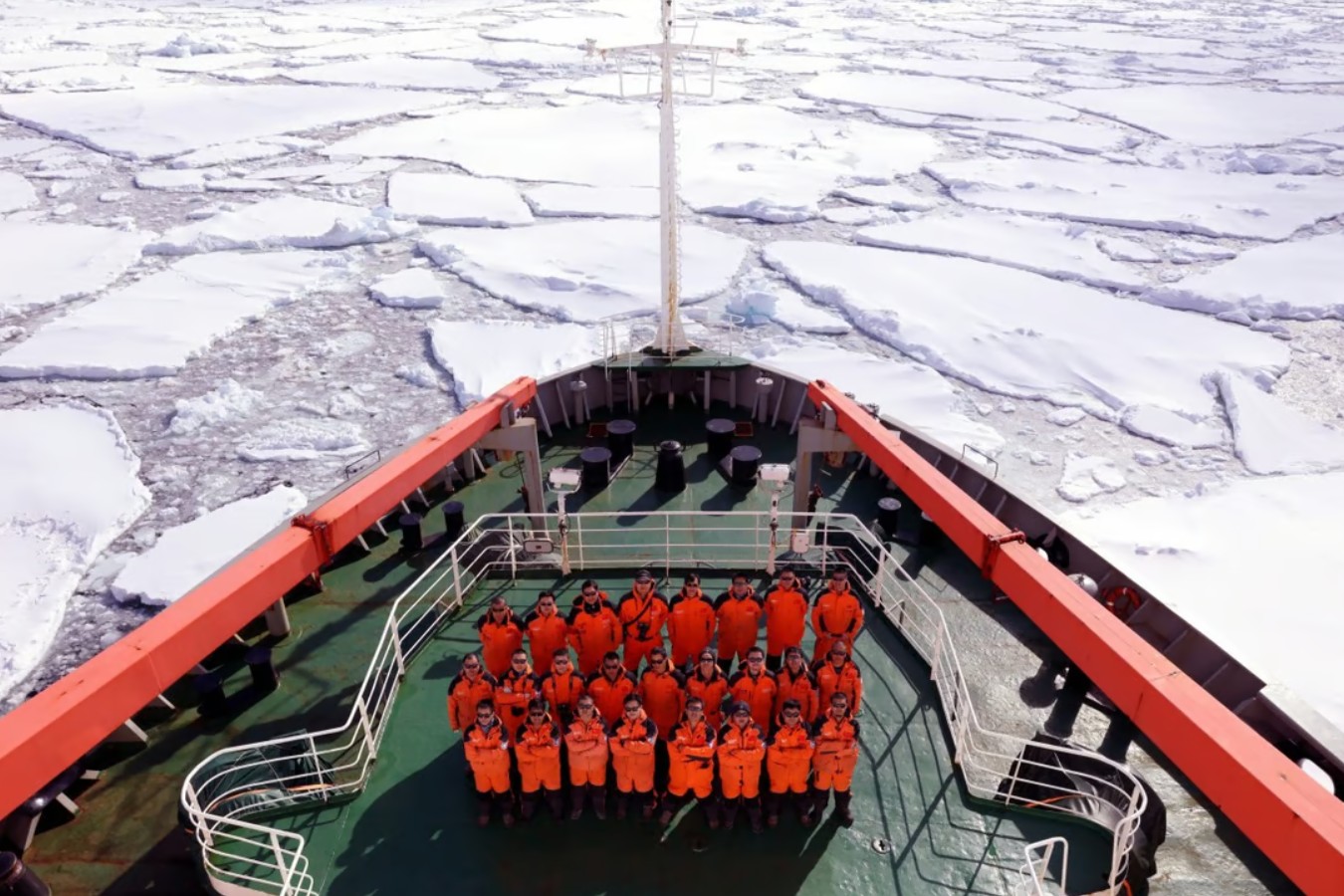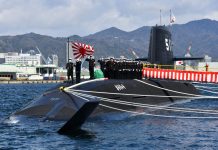The Arctic is warming nearly four times faster than the rest of the planet. What was once a frozen, inaccessible frontier is now becoming one of the world’s most hotly contested regions.
Melting sea ice is opening up new shipping lanes, exposing untapped reserves of oil, gas, and minerals, and creating a new arena for geopolitical maneuvering. Against this backdrop, Russia, China, and the United States are circling each other with a mix of cooperation and rivalry.
In recent weeks, Moscow has been sending mixed signals. On one hand, President Vladimir Putin has floated the idea of joint projects with Washington in the Arctic and even in Alaska.
On the other hand, Russia has restarted scientific missions with China, a move that underscores their growing partnership in the polar regions.
Meanwhile, Beijing is pressing ahead with an Arctic push of its own, dispatching a fleet of icebreakers and research vessels that has raised alarms in Washington.
Taken together, these moves reveal how the Arctic has become a testing ground for a complicated triangle of cooperation, competition, and suspicion between the three powers.
Putin’s Outreach To Washington
Speaking at a recent forum, Vladimir Putin struck an unusually conciliatory note. He said Russia was “discussing with American partners the possibility of working together” not just in its own Arctic zone but also in Alaska.
He hinted that his recent meeting with U.S. President Donald Trump in Alaska had been productive, offering a chance to lay the groundwork for better relations after years of confrontation.
Putin was careful, however, to place the burden of progress on the West. He stressed that much depends on Washington’s willingness to move forward, but he suggested that small steps have already been taken.
In effect, he was signaling that Russia does not want to see the Arctic turn into a frozen battlefield and is at least publicly open to cooperation.
For Moscow, this kind of outreach makes sense. Russia controls nearly half of the Arctic coastline and depends on the region for its long-term economic strategy. Developing oil and gas projects, expanding shipping routes, and asserting sovereignty over vast stretches of ice and sea are all central to the Kremlin’s plans.
At the same time, Western sanctions and the war in Ukraine have limited Russia’s options. Engaging the United States on Arctic science or search-and-rescue missions may be one way to soften tensions without making bigger political concessions.
Moscow & Beijing: A Polar Partnership Resumes
While Putin was talking about working with Washington, Russia was also rekindling its partnership with China at sea. For the first time in five years, the two countries launched a joint oceanographic expedition, sending 25 scientists aboard the research ship Akademik M.A. Lavrentyev.
The mission, which will last 45 days, will focus on how climate change is affecting deep-sea environments in the Bering Sea and the northwestern Pacific. Researchers plan to study how these ecosystems responded to environmental changes over the past 126,000 years, a period known as the Late Quaternary.
It is the ninth such mission since 2010, but the first since the pandemic disrupted scientific exchanges.
Chinese officials framed the voyage as proof of a “shared commitment to addressing global climate change and exploring cutting-edge marine science.” Over 110 Chinese scientists have taken part in these joint expeditions since the program began, and the collaboration is part of a broader push to integrate Chinese expertise into Arctic research.
This is not just about science. Since 2019, Russia and China have set up a joint laboratory on polar technology, and their coastguards have even carried out patrols together in Arctic waters.
The research expeditions provide a politically safe way to deepen ties while building the technical know-how both sides will need if they hope to exploit the Arctic commercially.
Beijing’s Fleet Moves North
China, however, is not limiting itself to scientific cooperation with Russia. Earlier this month, a fleet of five Chinese icebreakers and research vessels entered the Arctic Ocean after passing through the Bering Strait.
The ships included the Xue Long 2 (Snow Dragon 2), a state-of-the-art polar research icebreaker, along with several other vessels equipped with deep-sea submersibles and laboratories.
According to tracking data, the ships came within 290 nautical miles of Alaska—close enough for the U.S. Coast Guard to send aircraft and a cutter to monitor their movements. American officials stressed that the vessels remained in international waters but did not conceal their unease.

From Beijing’s perspective, the voyage was entirely legitimate. Chinese analysts pointed out that under the UN Convention on the Law of the Sea, the exclusive economic zone of any country extends only 200 nautical miles from its coast.
Since the Chinese ships were nearly 90 nautical miles beyond that limit, they argued, Washington had no grounds for complaint.
Still, the timing and scale of the operation raised eyebrows. Over the past decade, China has declared itself a “near-Arctic state,” a label that many in Washington view as opportunistic.
By building one of the world’s largest fleets of polar research ships, Beijing is signaling that it intends to be a long-term player in the Arctic, even though it has no territory there.
Why The Arctic Matters
The fuss over a handful of research ships might seem excessive, but the Arctic is increasingly central to global strategy.
The melting of sea ice is opening up two major shipping routes: the Northern Sea Route along Russia’s coast and the Northwest Passage across Canada’s Arctic archipelago.
Both promise to cut transit times between Asia and Europe by thousands of kilometers compared to the traditional route through the Suez Canal.
For China, which depends heavily on maritime trade, shorter and cheaper routes are enormously attractive. For Russia, controlling the Northern Sea Route offers both economic benefits and strategic leverage. For the United States, the risk is that these two powers could set the rules in a region that has long been treated as a kind of global commons.
Beyond shipping, the Arctic holds vast reserves of oil, gas, and minerals. Estimates suggest that 13 percent of the world’s undiscovered oil and 30 percent of its undiscovered gas may lie beneath the Arctic seabed. As the ice retreats, competition to exploit these resources is likely to intensify.
Add to this the military dimension. Russia already operates dozens of polar-capable ships, including nuclear-powered icebreakers, and has reactivated Soviet-era bases along its northern coast. China has no bases in the Arctic but is building the capacity to project its presence.
The United States, by contrast, has only a handful of aging icebreakers, though Congress has recently approved billions of dollars for new ones.
Washington’s Watchful Eye
American officials are well aware of what is at stake. In 2023, the Pentagon updated its Arctic strategy, warning that closer ties between Moscow and Beijing in the region could undermine U.S. security and that of its allies.
The U.S. Coast Guard, stretched thin with global missions, has been tasked with ramping up surveillance of Arctic waters.
When the Chinese fleet crossed the Bering Strait, U.S. forces responded with a mix of caution and restraint. Aircraft and patrol ships shadowed the vessels but did not interfere directly. Officials emphasized that freedom of navigation applies to all nations, even if they remain wary of Beijing’s intentions.
The reality is that Washington faces a dilemma. It cannot claim that Chinese research vessels have no right to operate in international waters without undermining the principle of freedom of navigation that the U.S. Navy relies on elsewhere, particularly in the South China Sea.
Yet allowing Beijing to steadily expand its Arctic footprint without pushback risks creating a new status quo that favors China and Russia.
Cooperation Or Collision?
For now, the Arctic is a stage for careful signaling rather than outright confrontation. Russia is hedging its bets, keeping lines open with the United States while embracing deeper ties with China.
Beijing is pushing hard to establish itself as a legitimate Arctic player through science and exploration. Washington is responding with surveillance, new investments in icebreakers, and a sharper strategic focus on the polar regions.
The tension lies in the dual-use nature of almost everything in the Arctic. A research icebreaker can also map the seabed for future resource extraction. A joint climate survey can also test navigation systems or equipment under extreme conditions. Scientific cooperation is real, but so is the strategic subtext.
As the ice melts, the Arctic will only grow in importance. The question is whether the region will become a zone of rivalry, where great powers test each other’s resolve, or one of cooperation, where science and shared challenges like climate change create space for dialogue.
- Shubhangi Palve is a defense and aerospace journalist. Before joining the EurAsian Times, she worked for ET Prime. She has over 15 years of extensive experience in the media industry, spanning print, electronic, and online domains.
- Contact the author at shubhapalve (at) gmail.com




